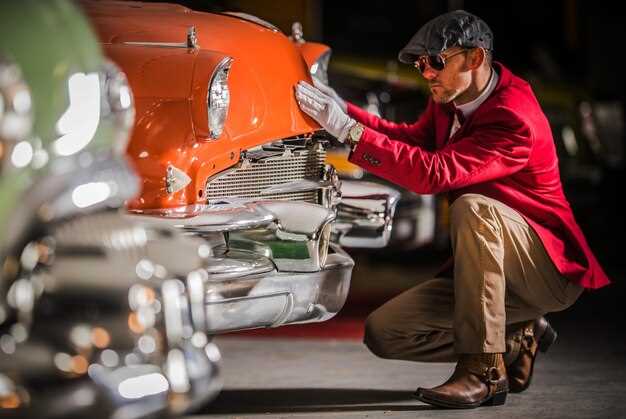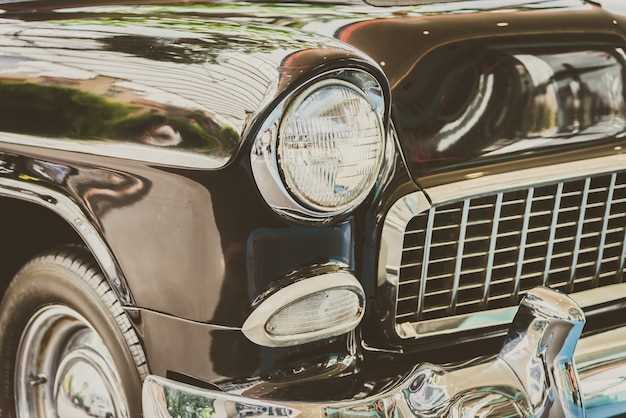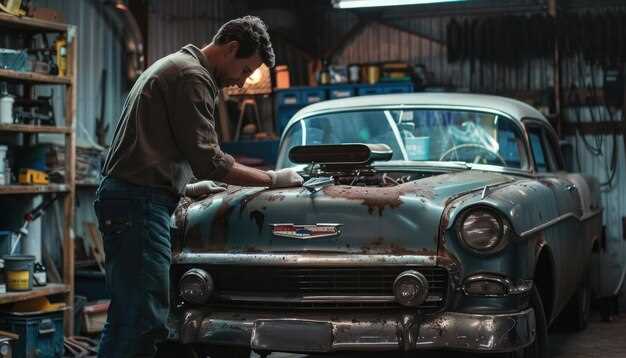
Restoring classic muscle cars is a labor of love that requires dedication, precision, and an understanding of automotive history. These iconic vehicles not only represent a significant era in automotive design but also hold immense value for collectors and enthusiasts alike. Whether you’re looking to bring back a classic beauty or enhance the performance of your favorite model, the restoration process demands careful planning and execution.
Restoration of muscle cars is about more than just aesthetics; it’s about preserving their spirit and performance. From the unmistakable roar of the engine to the sleek lines of the body, every detail matters in capturing the essence of these powerful machines. Proper techniques and tools are essential to address rust, mechanical failures, and cosmetic wear, ensuring that the final result is both visually stunning and mechanically sound.
In this article, we will explore some of the most effective tips for muscle car restoration, guiding you through the essential steps to ensure that your project achieves the highest standards. Whether you are a seasoned car enthusiast or a novice starting your first restoration, these insights will help you navigate the complexities of working on these classic cars, transforming them back to their former glory.
With the right approach, patience, and knowledge, you can successfully undertake the challenge of restoring your dream muscle car, allowing its legacy to continue for generations to come.
Choosing the Right Tools for Muscle Car Restoration

Restoring classic muscle cars requires a specific set of tools to ensure precision and efficiency. Selecting the right tools not only expedites the restoration process but also guarantees that the final outcome meets your expectations.
Wrenches and Socket Sets: Start with a comprehensive collection of wrenches and socket sets. These tools are essential for loosening and tightening bolts and nuts commonly found in muscle cars. Ratcheting wrenches and deep socket sets are particularly useful for accessing hard-to-reach areas in the engine bay and chassis.
Hand Tools: A variety of hand tools, such as screwdrivers, pliers, and hammers, are fundamental for disassembling and reassembling various components. Invest in high-quality hand tools that can withstand the rigors of muscle car work, ensuring durability and reliability.
Power Tools: Power tools, including drills, impact wrenches, and grinders, significantly speed up restoration tasks. A cordless drill is highly versatile and can be used for drilling holes or driving screws in tight spaces. An impact wrench is invaluable for quickly loosening stubborn fasteners.
Body Repair Tools: For restoring the body of a muscle car, you will need specific tools like body hammers, dollies, and a welding machine. These tools are crucial for repairing dents, reshaping metal, and performing rust repairs effectively.
Measuring and Alignment Tools: Accurate measurements are critical in restoration. Invest in tools like calipers, tape measures, and alignment gauges to ensure that all parts fit correctly and the car is properly aligned. This helps prevent future issues related to handling and performance.
Safety Equipment: Don’t neglect safety. Use gloves, goggles, and masks to protect yourself from debris and harmful fumes. Proper safety equipment is vital during the restoration process to prevent injuries and maintain a safe workspace.
In summary, equipping yourself with the right tools is imperative for any muscle car restoration project. Quality tools lead to a more efficient workflow and contribute to achieving an outstanding final result. Prioritize your toolkit to ensure a successful restoration journey.
Key Techniques for Restoring Classic Muscle Car Interiors
Restoring the interior of classic muscle cars is a crucial aspect of the overall restoration process. A well-maintained interior enhances both the aesthetic appeal and the value of the vehicle. Here are some essential techniques to consider during the restoration of muscle car interiors.
First, thoroughly assess the existing condition of the interior components. This includes the seats, dashboard, headliner, and carpeting. Understanding what can be salvaged and what needs replacement will guide your restoration efforts effectively.
For upholstery, choose high-quality materials that resemble the original fabric or vinyl. OEM (Original Equipment Manufacturer) products are ideal for maintaining authenticity. If the seats are damaged beyond repair, consider reupholstering or sourcing replacement seats that match the original designs.
Dashboard restoration is significant in muscle cars. If cracks or fading are present, you might need to refinishing or replace it entirely. Custom gauge overlays and refurbished switchgear can bring back the original look and functionality.
Updating the carpets can dramatically improve the overall appearance of the interior. Ensure correct fitting by purchasing pre-cut carpet kits specifically designed for your muscle car model. Use sound deadening materials underneath the carpet for added comfort and a quieter ride.
Headliner restoration is another critical area. If the fabric is sagging or torn, remove it carefully and replace it with new material. Make sure to use the proper adhesive and follow the correct installation techniques to avoid future sagging.
Pay close attention to the door panels as well. They often suffer from wear and tear. Repair or replace them to match the vehicle’s other interior features. Detailing elements like window cranks and door handles can add to the interior’s overall authenticity.
Finally, don’t overlook the importance of cleaning and detailing. A thorough cleaning process can rejuvenate any existing components. Focus on eliminating dirt, grease, and stains to restore the interiors to their former glory.
By implementing these techniques, you can effectively restore the interiors of classic muscle cars, ensuring they look outstanding and remain true to their original design.
Understanding Engine Overhaul for Classic Muscle Cars

An engine overhaul is a crucial process for maintaining the performance and longevity of classic muscle cars. These vehicles are celebrated for their power and design, but over time, their engines can suffer from wear and tear. An overhaul can restore performance, enhance reliability, and allow owners to enjoy that muscle car experience to the fullest.
During an engine overhaul, various components are inspected and replaced as necessary. Pistons, rings, and bearings are often updated to improve compression and efficiency. Also, the cylinder heads may be reconditioned to optimize airflow, which is crucial for achieving the muscle car’s classic performance.
Another key aspect of the process involves the timing components. Replacing the timing chain or belt, along with the associated gears, ensures that the engine operates smoothly and maintains its intended power band. Regular maintenance of these parts prevents costly damage in the long run.
During an overhaul, attention must also be given to the engine’s valve-train system, which includes the camshaft. Installing a performance camshaft can enhance the throttle response and contribute to the exhilarating driving experience that classic muscle cars are known for.
Finally, the rejuvenation of the engine block itself is essential. Many enthusiasts opt for cleaning and resurfacing to eliminate any imperfections that could hinder performance. Following this, a quality engine rebuild can ensure that your muscle car can roar down the road for years to come.
Understanding engine overhaul is vital for any classic muscle car owner. It not only maintains the value of the vehicle but also ensures that you enjoy the thrilling driving experience these iconic cars offer.
